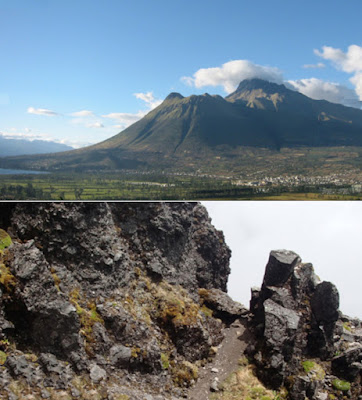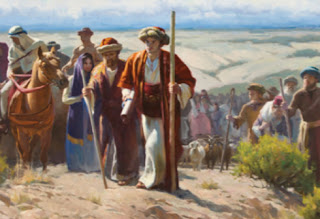Onondaga
Indian lands in Onondaga County, New York, just west of Palmyra, showing (red
dot) Jamesville, New York. To the left (red circle) Webster’s Farm and location
of the “square fort” (about where the blue arrow point is located)
There is every appearance of an extensive burying ground on Judge Strong’s premises, indicated by the following circumstances: “in excavating a cellar to his house in 1816, a full grown skeleton of a man was thrown out. Another was disinterred by a Mr. Carpenter, while digging post holes back of Judge S’s house. Six other graves were opened, having in them the skeletons of full grown persons. The bones were in an advance stage of decay. They were found about a foot and a half below the surface, and those thrown out were gathered together and buried. From appearances this spot must have contained several hundred graves. Webster informed Judge Strong, that the Indians had a tradition, that in one of their battles with the French in the Hollow, which had been protracted and severe, the French removed their wounded to this spot, and here buried such as did not survive.”
On the west hill, a mile south of the village was a clearing called the Webster orchard, and another called the Lewis orchard. The Young’s farm had a clearing of one hundred and fifty acres. There were several other smaller clearings at the Hollow, some of them covered with grass and clumps of wild plumb and cherry trees. At the Hollow, south of the village, was an Indian burying ground. In earlier times, when the great annual councils of the Five Nations, were held at Onondaga, they concluded each with a war dance, bade emotional farewells that were extremely affecting, and the open ground away from the area would literally become crowded with moving Indians, especially the Senecas and Cayugas, accompanied to a point by the Onondagas who invariably attended their friends, for the purpose of taking leave.
The bloody Battle of Oriskany, where American Patriot General Nicholas
Herkimer rallied the Tryon County militia and friendly Oneida Indians to battle
the American loyalists and allied Indians, including the Mohawk and Seneca and
the Six Nations, about 40 miles east of Onondaga lands—it was the beginning of
the Iroquois and Six Nations aligning themselves with the British, while the
Oneida fought with the Americans
Fort
Stanwix, built in 1758 during the French and
Indian War by British General John Stanwix in Oneida County, New York, and
abandoned in 1828
Therefore, it might be correctly assumed that whatever remains of forts that someone might want to claim, it is likely part of the French trappers and military installations or that of the American military from the French-Indian wars to the Revolutionary war.
In addition, regarding the so-called Nephite artifacts, in the area around Onondaga, there are large quantities of horn stone imbedded in the slate rock of the Hamilton bedrock equivalent to Millboro Shale, the oldest strata of the gas shale sequence. This slate is in the south part of the town of Onondaga, along the road to Otisco from South Hollow. Now, hornstone, or hornblende slate, is a clay-slate that abounds with mica and form the connecting chain of minerals form hornblende to granite. It is extremely hard, and especially flinty slate is a gray, siliceous stone, which was anciently used for chipping or “knapping,” such as in making arrowheads, or in making either “flake tools,” or “core tools,” by knocking off large or small flakes from the stone in percussion flaking using a “hammer stone.”
For greater precision of the flakes, the “hammer” was made of wood, bone or antlers. Sharp edges for blades (thin stone, twice as long as wide, sharpened on both sides, and hafted to handles) were achieved through “pressure flaking” by skilled stone knappers.
Knapping is
the shaping of flint, jasper, agate, chert, quartzite, obsidian or other
conchoidal fracturing stone through the process of lithic reduction to to make
stone tools
Along the banks of the Onondaga Creek are found a number of sulfur springs. In the town are numerous hopper-formed depressions, in shape like a potash kettle, from two to four rods (33 to 66 feet) across at top, and from ten to forty feet deep. These are on the south part of Mr. Thomas Dorwin’s farm. There is an abundance of petrifactions (organic matter changed into a stony substance) in this town, north towards the town of Camillus, and along the Onondaga valley, and several deposits of calcareous Tufa (limestone). In the West Hill are large bodies of conglomerate rock, and a split rock (limestone) quarry furnishes an inexhaustible material for building purposes, commencing near Mickles’ furnace, running westerly into the town of Camillus.
The number of forts in western New York is staggering, with more than
55 in the state, and almost 30 revolutionary period forts
(See the next post, “Have They Found Where Battles Were Fought Around Cumorah? – Part III,” for more on the so-called Nephite forts built in North America around the Great Lakes region and specifically the Onondaga lands)








































